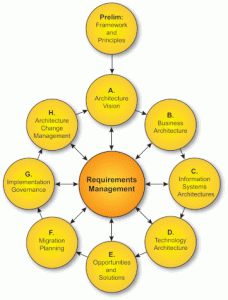From @bumblebest Q1: How often should we adjust an EA? What are the prime factors causing these possible changes? #HI201 #EA
Ans: Any change is inevitable. But the change should be managed so that the stakeholders can accommodate it. TOGAF’s Architecture Development Method (ADM) Phase H shows that change management occurs after the opportunity (in Phase E) has been identified, migration planning has been done (in Phase F) and implementation governance has been applied (Phase G).

Q2: What steps can we do to institutionalize and insulate the EA and PeHSP from partisan politics? #HI201 #EA
Ans: An Architecture Board is key to managing the EA. The EA Board ensures that the EA is clearly depicted and communicated to the relevant stakeholders of the enterprise. They are also responsible to ensuring that the changes can be realistically made. The eHealth TWG stands as the Enterprise Architecture Board for Health and they report to the National eHealth Steering Committee. This means that the TWG is the responsible entity to ensuring that an EA is created and maintained on behalf of the Steering Committee.
Q3: @amarcelo How can we include the private sector in the process? Can we compel them to follow and toe the line? If so, how? #HI201 #EA
Ans: Although private sector can be compelled with policy, the best approach is to make them see the benefit from their own perspective. The private sector is included in the PeHSFP through the ICT4H TWG and the Adviser’s Group> They are consulted for their insights and opinions.
Post a Comment